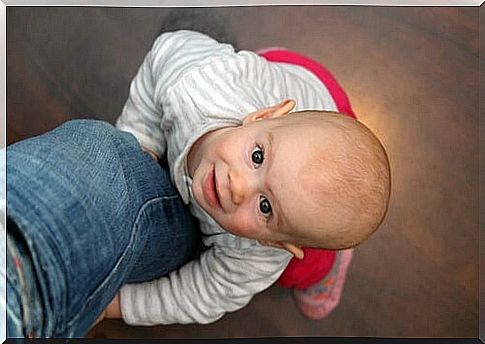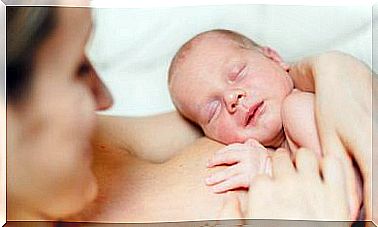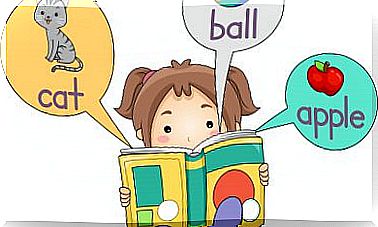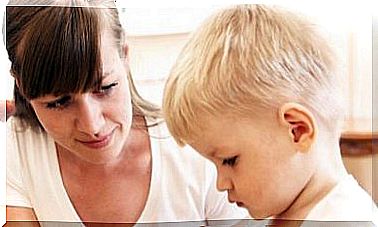Most Frequent Affective Development Conflicts

During childhood, all children will experience one or more affective development conflicts. These are normal; they are part of its evolutionary development. However, if these conflicts are very frequent or extend over time, they could lead to certain pathologies.
Sometimes affective conflicts are associated with conduct disorders. Among them: school failure, difficulties in social relationships, eating or sleeping disorders … Therefore, it is important that, from the family, we are attentive to prevent, detect and treat these affective conflicts in time.
Conflicts of affective development
The development of affectivity begins the moment we are born. The affective bond that is created between mother and baby will significantly benefit the baby’s social, affective and emotional development. Emotions and the way in which the child processes them will be the pillars of his personality.
Even so, all children will have one or more affective development conflicts during their childhood. These are normal, as they are part of its evolutionary development. Thus, below, we will see the most frequent ones.
Tantrums
A tantrum or tantrum is an immature way of expressing anger or anger at a disagreement or discomfort. They are normal from 12 months to three or four years.

These are manifested through anger, disgust or exaggerated crying. Likewise, it is the form of communication that children have to express their unsatisfied desires or needs, since at this stage (12-36 months) they still do not know how to control their emotions.
Situations that provoke tantrums in children
- Basic needs (hunger, thirst, sleep…) that we cannot satisfy at this time.
- Need to discharge or release current or past tensions, fears or frustrations.
- The child understands that something is unfair or undeserved.
- Obligation to do something that the child does not feel like doing or to stop doing something that he likes.
Around the age of 2, children discover the power of tantrums. If these are demanded and taken care of instantly, the little ones know that they have a tool to manipulate the emotions of their parents and thus achieve what they propose. Therefore, it is not advisable to listen to tantrums motivated by the desire to attract attention or demand something.
Once they are calm, we should talk to them and make them understand that getting angry, crying or kicking are not ways to get what they want. It is important to set limits and not to access their blackmails. Over time, they will understand that the right path is dialogue and communication, not “antics.”
However, if the tantrums are due to a basic need, such as sleep, hunger or fatigue, we must calm them, reassure them and hug them. We will act in the same way if we see that the child is afraid or frustrated by something. First, we have to connect with their emotions and then redirect the behavior and look for possible solutions.
Jealousy, one of the most frequent affective development conflicts
Jealousy can be defined as an irrational reaction composed of sadness, loss of self-esteem and feelings of envy towards another person. They are a normal evolutionary response to certain changes in the child’s environment.
They are not usually of greater importance if they are circumstantial and temporary. However, if they affect their self-esteem, their social and emotional relationships or if they exceed 5 years, jealousy can become a pathology.
Thus, jealousy can lead to behavioral problems such as aggressiveness, insecurity or regression. They can also cause imbalances in interpersonal relationships, distrust, stubbornness or envy.
Generally, the main reason that causes jealousy in children is the arrival of a new sibling. Consequently, the child suffers. He realizes that his emotional needs are not being met as before and that he has lost exclusivity.
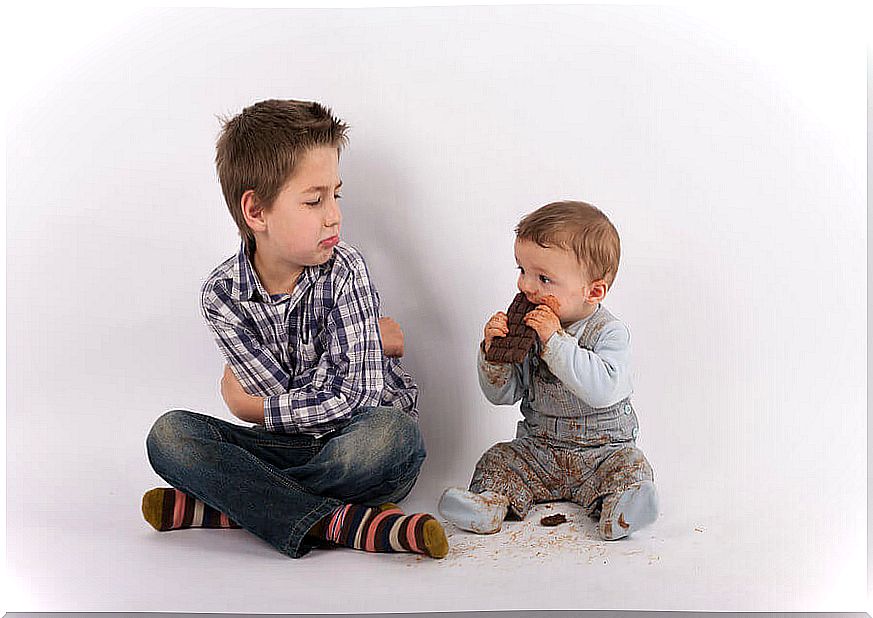
But there are also other causes that can provoke in the child the fear and the feeling of losing the affection of his parents. For example:
- Favoritisms and preferences that parents sometimes show for one of their children.
- Excessive dependence on one of the parents by the child.
- Feelings of insecurity and maladjustment.
To control and prevent jealousy, it is important for the family to strengthen the child’s self-confidence and educate him in affection. It is also important to modify certain behaviors to prevent the child from having the feeling of loss of affection.
Regressions
Sometimes the habitual behavior of children undergoes modifications. A child can regress in his learning, that is, he loses the skills in a habit that he had already acquired in previous stages. For example: wetting the bed again, talking in a more childish way, or asking for the pacifier again.
These behaviors appear over 3 or 4 years. They are normal and frequent when the child is faced with a recent change in his environment that generates stress. Thus, regressions act as a defense mechanism against trauma, conflict or affective maladjustment. Therefore, it is important not to get angry. Regressions are fleeting. It is a phase in which the child seeks his emotional balance.
On the other hand, we must identify the causes that have caused the regression. Thus, we can help the child. As a general guideline, we should never be angry with him, criticize him, or shame him for his behavior. It is convenient to show solidarity with the child, show him affection and dedicate more time to him.
Most common causes of regression
- Changes in the child’s care routine; new caregiver or starting school.
- Mother’s pregnancy or the birth of a new sibling.
- A significant illness in the child or a family member.
- A recent death of a family member.
- Family conflicts or parental divorce.
- A recent or future move to a new home.
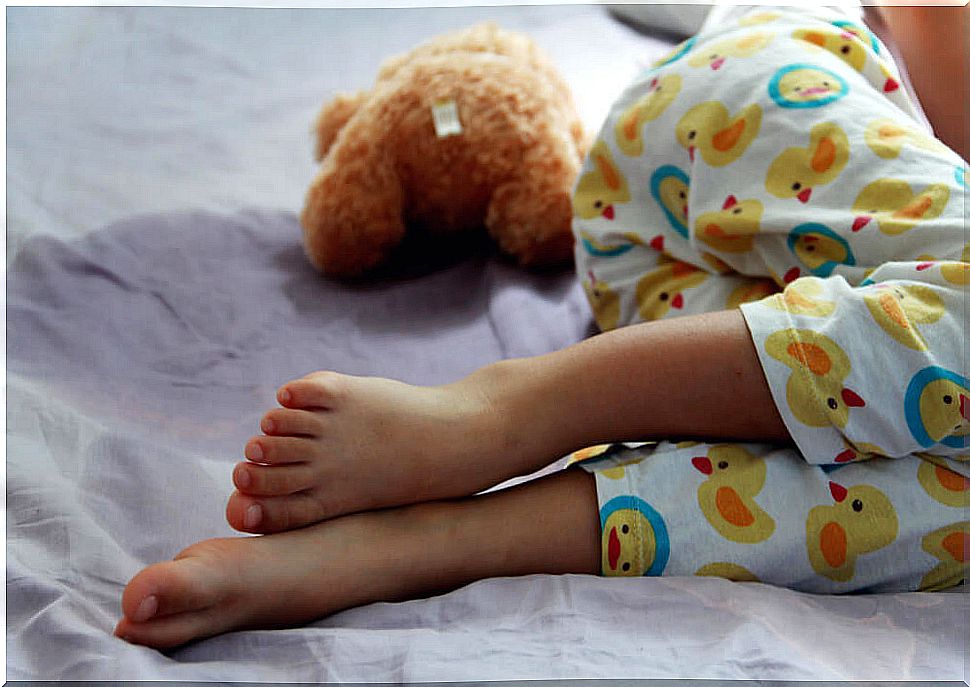
Fears
Fear is a normal emotion that is part of childhood development. It is an alarm system that helps the child to avoid potentially dangerous situations. The fearful situations that children experience vary according to their developmental stage.
Thus, with age, some fears subside and new ones appear to adapt to the changes in the world around them. These age-associated fears tend to be transitory and short-lived. However, in some children they can become chronic and pathological.
Fears according to age
- During the first year, fears related to intense or unknown stimuli, such as loud noises and strangers , are more frequent.
- Until the age of six, fears related to animals, storms, darkness, fantastic beings (such as witches or ghosts), catastrophes and separation from parents are common.
- From the age of six, the fear of physical harm, ridicule and, somewhat later, of illnesses and accidents, poor school performance and differences between parents appears
In general, physical fears (animals, storms, harm, etc.) decrease with age, while social fears (ridicule, rejection, public speaking, etc.) increase.
On the conflicts of affective development
If at any time the child presents any of these affective development conflicts, we must think that they are normal. They are part of its development, therefore, we must always act from affection and affection, as long as it is balanced. Excessive and overprotective affection can harm their psychological development as much as lack of affection.
